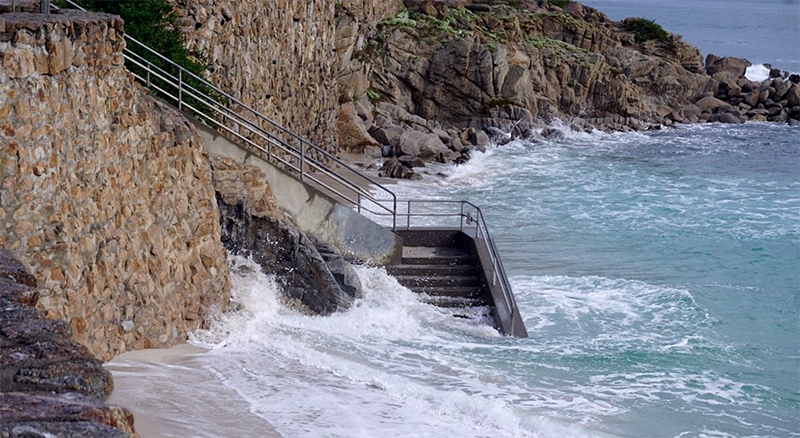California Coastal Communities Brace for Rising Seas

With 3,427 miles of tidal coastline, California is one of the states expected to be most affected by sea-level rise.
California coastal communities are in the midst of planning for a future where high tides lap up against coastal homes, and storms block roads and damage businesses. According to the state’s Fourth Climate Change Assessment, released in 2018, rising seas could cause over $17 billion in damage to residential and commercial buildings by 2100. That doesn’t include damage to rail lines, roads and bridges that lie in the path of rising waters.
This article, originally published by Sea Grant California, highlights two recent research projects to address this issue, one of which was conducted by Dr. Charles Colgan and the Center for the Blue Economy.

Charles Colgan and colleagues at the Middlebury Institute of International Studies in Monterey developed a new model that allows planners to view possible futures, understand how likely different cases are and plan for them by providing a more complete understanding of the costs and benefits of different options. The tool can give policymakers a better understanding of costs of action—and of inaction.
From the scenarios and probabilities, we’ve developed a simulation that can forecast thousands of possible futures in the computer and estimate the probable effects of sea-level rise and responses to it over many different iterations of the future. We come away with not what will happen but probabilities. We’re trying to help California planners get directly to the science that underlies the Coastal Commission and Ocean Protection Council recommendations.
Because the model integrates sea-level rise projections, potential solutions, and cost-benefit analysis, it allows policymakers to ask “what if” questions about the future. In Monterey, Colgan says, they asked questions like, “What if we do things sooner rather than later? What if economic growth or population growth in region isn’t what we expect?”
For the City of Monterey, the researchers found that while most projections show the biggest impacts of sea-level rise will come after the year 2050, there is no economic benefit in waiting to take adaptation measures.
In the Monterey case, our analysis showed that it is better to start sooner rather than later. If you wait until 2050 to take adaptation measures, there’s almost zero probability that you’ll get an economic benefit from waiting.
For More Information
See the full article: California coastal communities brace for rising seas
